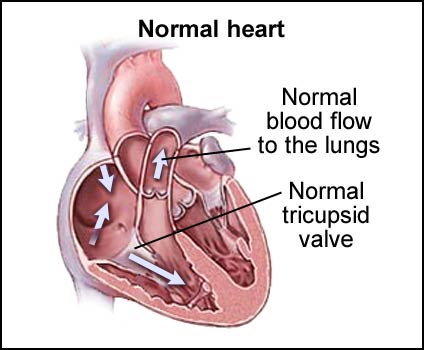
Fontan Procedure
A Fontan procedure is a series of surgical steps that is used to correct tricuspid atresia. Tricuspid atresia is a congenital defect that is characterized by a narrowed or closed tricuspid valve, a narrowed or closed pulmonary valve, and an underdeveloped ventricle. (see fig 1 and 2). These defects result in low oxygen levels. To correct this, a bi-directional Glen shunt is performed (see fig. 3). This removes the superior vena cava from the right atrium and attaches it to the pulmonary artery. The right atrium is then attached to the pulmonary artery. An internal baffle then directs blood from the inferior vena cava into the pulmonary artery (see fig. 4). This blood then flows to the lungs and improves oxygenation of the body.
Figure 1: Normal heart with normal blood flow.
Figure 2: Heart with Tricuspid Atresia.
Figure 3: First stage of Fontan procedure.
Figure 4: Second stage of Fontan procedure.
Visit Ohio Heart and Vascular Center for more information.



